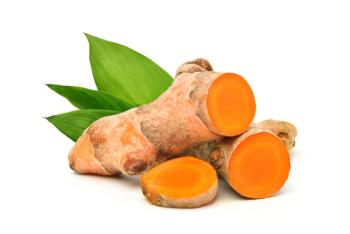
- The Column-12-05-2017
- Volume 13
- Issue 17
The Benefits of Nano-Surface and Molecular‑Orientation Limited (nSMOL) Proteolysis for Monoclonal Antibody Drug Analysis
The application of a novel approach that enables a selective proteolysis of the Fab region of monoclonal antibodies (mAbs) is described. The technique is called nano-surface and molecular-orientation limited (nSMOL) proteolysis. By restricting the proteolysis to the complementarity-determining region (CDR) of the mAb, there is considerable reduction in sample complexity and the time required for method set-up and optimization.
Stéphane Moreau1 and Neil Loftus2,1Shimadzu Europa GmbH, Duisburg, Germany, 2Shimadzu Corporation, Manchester, UK
The application of a novel approach that enables a selective proteolysis of the Fab region of monoclonal antibodies (mAbs) is described. The technique is called nano-surface and molecular-orientation limited (nSMOL) proteolysis. By restricting the proteolysis to the complementarity-determining region (CDR) of the mAb, there is considerable reduction in sample complexity and the time required for method set-up and optimization.
The first commercial development of a therapeutic monoclonal antibody (mAb) in 1986 resulted in Orthoclone OKT3 immunosupressant, which was approved to reduce acute rejection in patients following organ transplants. In the 1990s, the first chimeric mAbs were approved and marked the beginning of a high-impact growth of humanized and then fully human mAbs, treating a range of diseases including cancers, multiple sclerosis, asthma, and rheumatoid arthritis.
The growth of the mAb market is driven by a number of factors, such as high specificity (resulting in a lower safety risk), the development of new products for new clinical therapies, and the need for a cost-effective supply. It also seems likely that the impact of biosimilars approvals in established therapeutic areas will have a strong influence on drug pricing while reshaping clinical use (1).
Biotherapies have revolutionized the treatment of chronic inflammatory diseases in their rheumatic (RA, AS, RF), cutaneous (PS), and digestive (CD, UC) forms as well as the treatment of some cancers (Table 1).
Despite the dramatic impact of mAbs to improve clinical outcomes for a number of therapeutic indications, there is growing evidence of extensive “between-subject” variability. This has resulted in therapeutic failures through suboptimal exposure and supports the view that an individualized dosing strategy is needed to ensure that treatment is both safe and effective. This view has been considered for a number of therapeutic areas (2); for example, in inflammatory and malignant disease (3), oncology (4), and rheumatoid arthritis (5).
Alternative Approach: Mass Spectrometry (MS)-Based Assays
Current methods for measuring mAbs use enzyme-linked immunosorbent assay (ELISA) techniques. Whilst there are many advantages in using ELISA-based assays, there are also constraints. Each ELISA kit is specific for a mAb, and the results between different CE-marked ELISA assays may not be directly comparable (6).
An alternative approach considers mass spectrometry (MS)-based assays. MS techniques use tryptic fragments to generate unique signature peptides specific to each mAb, enabling highly selective detection. Although this method is used universally in quantitative protein analysis, several factors need to be considered in method validation and optimization.
Differentiating specific mAb tryptic fragments from the human polyclonal immunoglobulin background may be influenced by excess peptide mixtures and protease contamination, which can cause ionization suppression, carryover, noise elevation, lower dynamic range, and retention time reproducibility as well as lower column sustainability. Standardizing the tryptic digestion may also be challenging because of the limited availability of standard isotope labelled material (7,8).
To help mitigate these factors, a novel method has been developed: a nanoâsurface and molecular-orientation limited (nSMOL) proteolysis (7) to enable a Fab-selective proteolysis, which maintains antibody sequence specificity while decreasing excess peptide analytes. It is designed to minimize sample complexity and simplify the sample preparation protocol, delivering robust quantitation with higher sensitivity.
To reduce sample complexity, the location of the reaction field has been minimized by limiting protease access to the Fab region-selective proteolysis. This technique brings together several design elements in optimizing a highly efficient and quantitative detection of complementarity-determining region (CDR) peptides while decreasing the peptide numbers of the analytical target method.
The first design element is to immobilize trypsin onto a spherical nanoparticle with a diameter of 200 nm to provide a high contact probability between the protease and substrate. The second design component is to immobilize the antibody by binding the Fc region onto a Protein A/G resin with a pore size diameter of
50–100 nm so that the Fab region is oriented outwards to the solution. By restricting digestion, tryptic fragments are limited to the Fab region, allowing a selective quantification of target mAb peptides with higher efficiency and selectivity in combination with MRM measurement.
Experimental
In the following example (see reference 4), the signature peptide quantitation was analyzed using a liquid chromatography–electrospray ionization (LC–ESI)–MS with triple quadrupole (Nexera X2 and LCMSâ8050, Shimadzu). LC conditions were as follows: solvent A: 0.1% aqueous formic acid; solvent B: acetonitrile with 0.1% formic acid; column: 2.1 × 50 mm, 1.9-m Shim-pack GISS C18 (Shimadzu Corporation); column temperature: 50 °C; flow rate: 0.4 mL/min (unless specified). Gradient started with 1% B for 1.5 min, then increased to 40% by 4.5 min and subsequently to 95% by 5.5 min (flow rate 0.1 mL/min). Initial conditions (1% B) were re-established by 6 min (flow rate 0.1 mL/min) and held for re-equilibration until 6.5 min.
MS conditions were as follows: ESI probe: desolvation line and heat block temperatures – 300 °C, 250 °C, and 400 °C respectively; nebulizer: heating and drying nitrogen gas flows: 3, 10, and 10 L/min respectively;
dwell time: 10 ms for each transition. MRM ions of peptide fragments were imported from the measured values of structureâassigned fragments by highâresolution LC–MS analysis. CID Ar partial pressure in the Q2 cell was set to 270 kPa. The electrode voltage of Q1 pre bias, collision cell Q2, Q3 pre bias, and parent and fragment ion m/z were optimized using LabSolution software (Shimadzu). For MRM transition, one fragment ion of b- or y-series was selected for quantitation, and two ions for structural confirmation according to the optimized MRM ion yield.
Results
The peptide ASGITFSNSGMHWVR (m/z 1649.8) was selected as the signature nivolumab peptide because it showed no interference from human plasma and was in concordance with nivolumab concentrations (Figure 2).
The practical validation dataset of several mAbs acquired by the nSMOL method met the validation guideline criteria issued by the U.S. FDA for Bioanalytical Method Validation of LC–MS bioanalysis for lowâmolecularâweight (MW) drug compounds (9–15). This is highlighted by the example of trastuzamab in Figure 3.
In addition, nSMOL has demonstrated its ability to support multiple analyses (15) in cases where quantitation of several mAbs is needed in one sample.
nSMOL produces highly reproducible data and avoids the troublesome steps of denaturing, reduction, and alkylation normally associated with protein digestion. There is also no need for solid-phase extraction after the reaction. After nSMOL preparation, samples can be injected directly onto the LC–MS system. The productivity and robustness of LC–MS mAb bioanalysis is improved compared to traditional processes and more accurate results with the capability of multiplexing analysis, which is not possible with immunoassays, can be obtained.
Conclusion
nSMOL proteolysis has been designed to minimize sample complexity while maintaining the specificity of the protein substrate for LC–MS/MS quantitation in therapeutic drug monitoring of mAbs. nSMOL proteolysis is an entirely novel solid–solid proteolysis method engineered to deliver highly efficient and quantitative detection of CDR peptides while decreasing the peptide numbers of the analytical target without antibody denaturation.
References
- Source 19 April 2017: https://www.pharmacompass.com/data-compilation/product-sales-data-from-annual-reports-of-major-pharmaceutical-companies-2016
- http://onlinelibrary.wiley.com/wol1/doi/10.1002/cpt.278/full
- https://www.zgt.nl/media/5861/therapeutic-drug-monitoring-of-monoclonal-antibodies-in-inflammatory-and-malignant-disease.pdf
- https://link.springer.com/article/10.1208%2Fs12248-014-9631-6, http://onlinelibrary.wiley.com/doi/10.1111/j.1365-2125.2007.02914.x/abstract
- http://onlinelibrary.wiley.com/doi/10.1111/bcp.13192/abstract
- http://gut.bmj.com/content/65/Suppl_1/A84
- R. Jenkins et al.,AAPSJournal17(1), 1–16 (2015). DOI: 10.1208/s12248-014-9685-5
- D. AlDeghaither, B.G. Smaglo, and L.M. Weiner, J. Clin. Pharmacol.55(03), S4–S20 (2015). DOI: 10.1002/jcph.407
- N. Iwamoto et al., Drug Metab. Pharmacokinet.31(1), 46–50 (2016).
- N. Iwamoto et al., J. Chromatogr. B 24, 9–16 (2016).
- N. Iwamoto et al., Analyst 139(3), 576–80 (2014).
- N. Iwamoto et al., Analytical Methods 21, 9177–9183 (2015).
- N. Iwamoto et al., Biol. Pharm. Bull.39(7), 1187–94 (2016).
- N. Iwamoto et al., Bioanalysis8(10), 1009–20 (2016).
- N. Iwamoto et al., Clin. Pharmacol. Biopharm.5–4 (2016).
Stephane Moreau obtained his diploma in 1994 at INSA (National Institute of Applied Sciences) in Rouen, France, in fine chemistry and engineering specializing in chemical process engineering. He then started his professional career in laboratory equipment distribution before he joined the brand new Shimadzu France subsidiary in 2002. Since then, he has held many positions to develop the MS range business. Since September 2013, he has been product manager for the MS range with Shimadzu Europe.
Neil Loftus is the General Manager, Mass Spectrometry Business Unit (Overseas) Shimadzu Corporation focusing on the delivery of new software and application solutions for the Shimadzu mass spectrometry platforms. Following a research position with the London Hospital Medical College in metabolism and pharmacokinetics, Neil then moved to Alderley Park to continue working in an industrial setting for DMPK work. Transitioning to mass spectrometry opened opportunities in VG Organic, Thermo, and Shimadzu.
E-mail:
Articles in this issue
about 8 years ago
Instrumental Innovations 2017about 8 years ago
Peak Introduces Free to Use GC Gas Calculatorabout 8 years ago
Kevin Schug Earns ACS Education Excellence Awardabout 8 years ago
Dwight Stoll Receives EAS Young Investigator Awardabout 8 years ago
Sciex Announce China Expansionabout 8 years ago
Tips & Tricks GPC/SEC: How to Treat Your RI Detectorabout 8 years ago
Get More Separation Power With Multidimensional Chromatographyabout 8 years ago
The Durian Tang: Investigating the World’s Smelliest Fruitabout 8 years ago
Vol 13 No 17 The Column December 05, 2017 Europe and Asia PDFNewsletter
Join the global community of analytical scientists who trust LCGC for insights on the latest techniques, trends, and expert solutions in chromatography.





